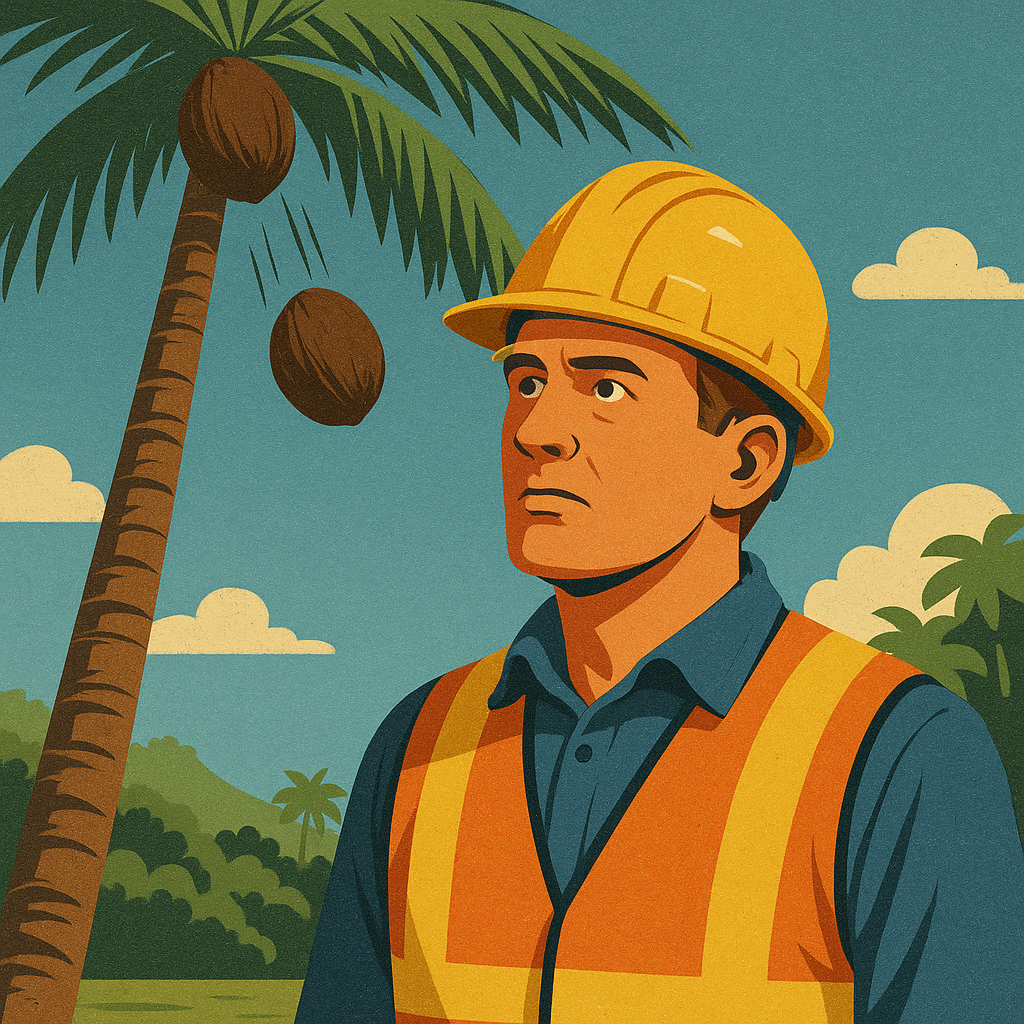I. Introduction
It was just another December afternoon on a busy industrial site. Crews were working below a massive steel vessel when a sharp crack split the air. A block of ice, roughly the size of a large coconut, broke free from fifty feet above and smashed into the scaffold only a few feet away. Moments earlier, one of the workers had been standing in that exact spot. He moved just in time.
In an instant, the routine became life-threatening. The realization hit hard: had he been a few steps slower, his family might have been planning a funeral instead of a Christmas. That is the kind of near-death experience no one forgets.
What followed was a descent into anxiety, sleepless nights, and panic attacks. A doctor quickly diagnosed a psychological injury consistent with post-traumatic stress. The worker sought help, began counseling, and hoped the workers’ compensation system would step in to provide support.
Instead, the claim was denied.
II. The Incident
The vessel where the crew worked had been outdoors in freezing conditions for weeks. Ice was known to have accumulated. Supervisors were aware of the hazard, but no effort was made to clear it before installation, nor was the area cordoned off once falling chunks were observed.
When the block struck the scaffold, it exploded like a bomb. Shards of ice and snow blasted outward, striking the worker in the face and spraying across a twenty-foot radius. The scaffold shook violently under the impact. Several workers instinctively jumped back, believing more ice could fall at any moment. The hazard was real, immediate, and objectively life-threatening.
III. The Fallout
The morning after, while preparing for work, the worker suffered his first panic attack. He reported himself unfit for duty and sought medical help. A psychologist diagnosed PTSD and prescribed counseling.
The employer’s response compounded the injury. Rather than providing support, management withheld the incident report, dangling it as leverage to push him back to work. In conversations afterward, company officials minimized the trauma, calling it nothing more than an “issue with dropped objects” that could be solved by sitting in an office.
IV. WCB’s Denial and the Employer’s Defense
Despite medical evidence, WCB denied the claim three times. Their reasoning was built on the employer’s “Drops Calculator,” a formula they claimed showed the block of ice could not have caused serious injury. By this logic, there was no credible “threat” to life.
The worker’s lived experience told a different story: the violent vibration of the scaffold, the spray of ice shards hitting his face, and the realization that seconds earlier he had been standing in the exact impact zone.
V. The Physics of Falling Ice
The numbers make the danger undeniable.
-
A 5-7 pound block of ice roughly 10 inches across falling from 50 feet carries thousands of Newtons of impact force.
-
The average human skull fractures at 4,000–5,000 Newtons.
-
The cervical spine can fail catastrophically under 3,000–4,000 Newtons.
-
Even if a hard hat absorbed half of the impact, the residual force would still range from 7,000 to 10,500 Newtons — well above what the head and neck can withstand.
A standard industrial hard hat is designed for small falling tools, not slabs of ice weighing close to 10 pounds dropped from five stories. Once the suspension bottoms out, the remaining energy travels directly into the skull and cervical spine.
When the ice struck, it did not stay intact. The block shattered on impact, leaving behind the largest fragment about the size of a coconut, which means the original slab had been larger before it broke apart. The collision sent shards of ice and snow outward in every direction, striking the worker in the face and scattering across the scaffold. It was less like a neat impact point and more like an explosion of debris.
For perspective, coconuts kill an estimated 150 people worldwide each year when they fall from 30 to 80 feet. A coconut weighs about 1-3 pounds. The ice that hit this scaffold was larger, fell from comparable height, and unlike a coconut, it exploded, multiplying the danger.
The physics prove it. The sensory evidence confirms it. The entire crew felt the scaffold shake under their boots. The hazard was not theoretical — it was a narrowly avoided catastrophic injury.
VI. The Case for Acceptance
WCB’s own traumatic psychological injury policy requires only two things: a DSM-5 diagnosis, and exposure to an event involving actual or threatened death or serious injury. Both conditions are met.
-
The event was sudden, frightening, and shocking.
-
It occurred at a specific time and place, documented and undisputed.
-
It involved a credible, immediate threat of death or serious injury, confirmed by physics, eyewitness accounts, and industry safety literature.
-
The worker has been diagnosed with PTSD and is undergoing treatment.
Every policy box is checked.
VII. What’s at Stake
This case is about more than one worker.
-
If WCB can dismiss a near-death experience as a mere “perception,” then countless workers who narrowly escape workplace hazards will be left without protection.
-
It tests whether psychological injuries will truly be treated with the same seriousness as physical ones in Alberta.
-
It raises questions about employer accountability when hazards are known, ignored, and later minimized.
VIII. Conclusion
The ice missed, but the trauma did not.
This worker was seconds away from catastrophe. He did everything right: reported the incident, froze the scene when supervisors would not, sought medical care, and provided consistent evidence. A licensed psychologist diagnosed his condition. The hazard was real. The threat was real.
To call this a “near miss” is not just semantics. It is a denial of science, a denial of policy, and most of all a denial of justice.
The decision now lies with Alberta’s Dispute Resolution and Decision Review Body. Their ruling will determine whether near-death experiences on the job are recognized for what they are — traumatic events — or dismissed as figments of perception. The answer will shape not just this case, but the confidence of every worker who trusts that when the worst almost happens, the system will be there to help.


